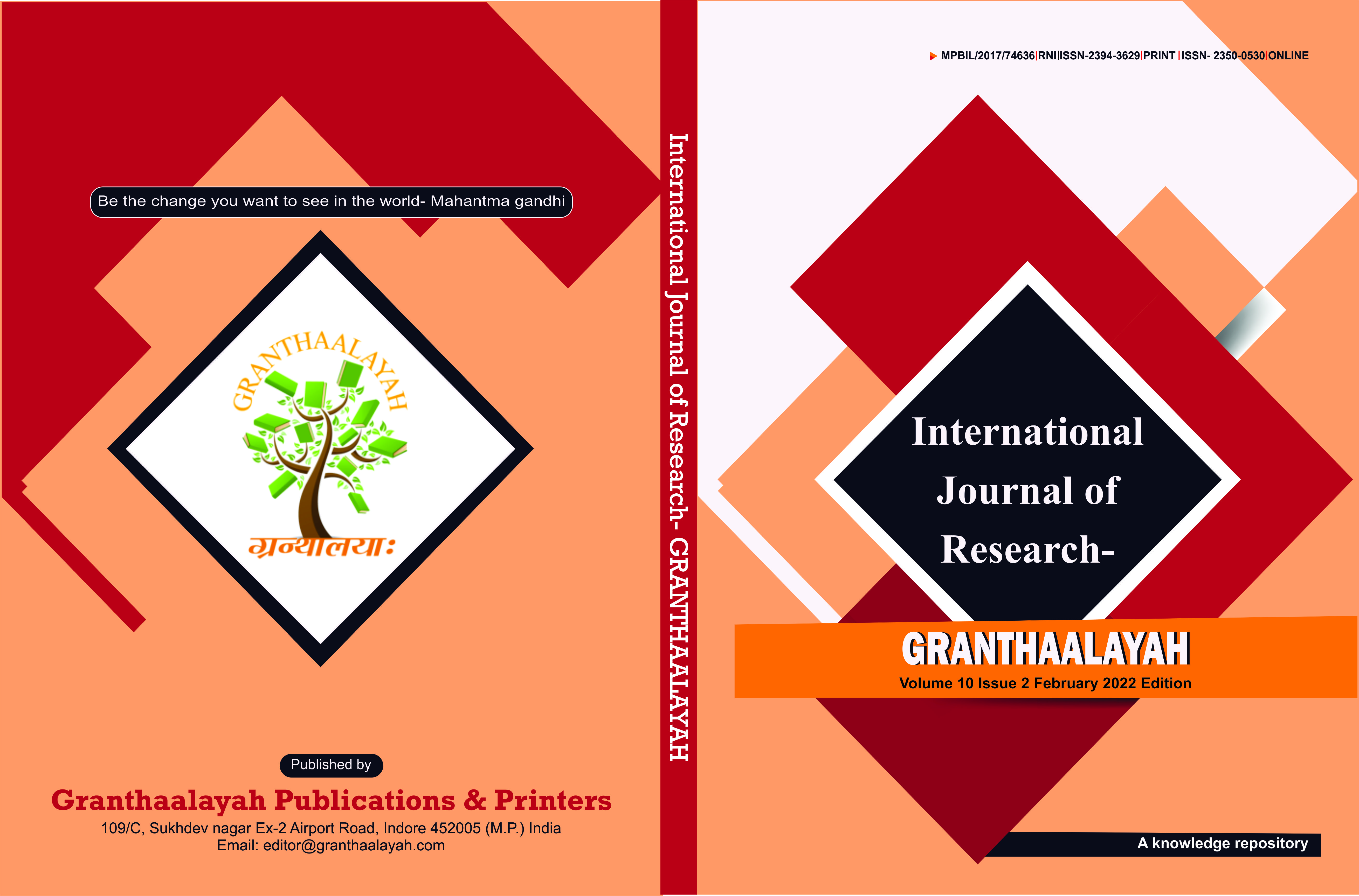THE IMPLEMENTATION OF TEACHING MATERIAL BASED ON STEM IN FLUID FOR BIOLOGY STUDENT
DOI:
https://doi.org/10.29121/granthaalayah.v10.i2.2022.4507Keywords:
Teaching Material, STEM, Fluids, InterdisciplinaryAbstract [English]
In this time, every student will need to know interdisciplinary knowledge. The purpose of this research is to develop a teaching material collaborating the understanding of physics concept about fluid topic and its application in biology based on Science, Technology, Engineering, and Mathematics (STEM) to enhance scientific literacy skills of students. The developed teaching material has passed a validation process including content, the designed problems/questions for each subtopic and from the STEM aspect. The basic competencies that have been set are generally related to understanding the concept of static and dynamic fluid and their application in biology. For static fluid emphasizes on the physics concept in terms of pressure, Pascal's principle, buoyancy, and surface tension. Understanding these concepts are then used to analyze the phenomena of worm movement, fish buoyancy, water transport in plants, Marangoni propulsion in Microvelia insects. For dynamic fluid, it emphasizes on the concept physics such as the Bernoulli equation, viscosity, Poiseuille's law, laminar and turbulent flow. Understanding these concepts are then used to analyze the phenomenon of blood flow in humans. While for STEM, it focuses on the technique of dilating narrow blood vessels. To determine the effectiveness of the developed teaching materials, N gain analysis and student response tests were then carried out. According to N gain test, it shows an increase in scientific literacy by 0.48 due to the use of this teaching material and finally from the student response test, it shows that the developed teaching materials are feasible for use as a learning source for students
Downloads
References
Akbar, Sa'dun. (2013). Instrumen Perangkat Pembelajaran. Bandung : Rosda Karya.
Damayanti, W. and K.F. Perdana, (2016) Penguasaan Konsep Biologi Berbasis Konsep Fisika Menggunakan Pembelajaran Tematik dengan Model Problem Based Learning. Kontemporer Sains, Lingkungan, dan Inovasi Pembelajarannya
Frankel, T., (2011) The geometry of physics: an introduction. : Cambridge university press.
Hake, R. R. (2002). Analyzing Change/Gain Scores. November 2015. http://www.physics. indiana. edu/~ sdi/AnalyzingChange-Gain.pdf
Hilton Huling and Jackie Speake Dwyer, (2018) Designing meaningful STEM Lessons, NSTA Press, Virginia
Keevil, S.F., (2012) Physics and medicine : à historical perspective. The Lancet, 379(9825) : p. 1517-1524. Retrieved from https://doi.org/10.1016/S0140-6736(11)60282-1 DOI: https://doi.org/10.1016/S0140-6736(11)60282-1
Klymkowsky, M.W., K. Garvin-Doxas, and M. Zeilik, (2003) Bioliteracy and teaching efficacy : what biologists can learn from physicists. Cell Biology Education, 2(3) : p. 155-161. Retrieved from https://doi.org/10.1187/cbe.03-03-0014 DOI: https://doi.org/10.1187/cbe.03-03-0014
Koonin, S.E., (2018) Computational physics : Fortran version. : CRC Press. Retrieved from https://doi.org/10.1201/9780429494024 DOI: https://doi.org/10.1201/9780429494024
Maris, P., et al., (2010) Scaling of ab-initio nuclear physics calculations on multicore computer architectures. Procedia Computer Science, 1(1) : p. 97-106. Retrieved from https://doi.org/10.1016/j.procs.2010.04.012 DOI: https://doi.org/10.1016/j.procs.2010.04.012
Nicoll, G., (2001) A report of undergraduates' bonding misconceptions. International Journal of Science Education, 23(7) : p. 707-730. Retrieved from https://doi.org/10.1080/09500690010025012 DOI: https://doi.org/10.1080/09500690010025012
Serway, R.A. and J.W. Jewett, (2018) Physics for scientists and engineers with modern physics. : Cengage learning.
Toto, T. and L. Yulisma, (2017) Analisis Aplikasi Konsep Gaya Dalam Fisika Yang Berkaitan Dengan Bidang Biologi. Jurnal Penelitian Pengembangan Pendidikan Fisika, 3(1) : p. 63-72. Retrieved from https://doi.org/10.21009/1.03109 DOI: https://doi.org/10.21009/1.03109
Published
How to Cite
Issue
Section
License
Copyright (c) 2022 Dewi Wulandari, Destria Roza, Ahmad Shafwan S.Pulungan, M. Aswin Rangkuti, Wasis Wuyung Wisnu Brata, Yul Ifda Tanjung, Irham Ramadhani, Rajo Hasim L

This work is licensed under a Creative Commons Attribution 4.0 International License.
With the licence CC-BY, authors retain the copyright, allowing anyone to download, reuse, re-print, modify, distribute, and/or copy their contribution. The work must be properly attributed to its author.
It is not necessary to ask for further permission from the author or journal board.
This journal provides immediate open access to its content on the principle that making research freely available to the public supports a greater global exchange of knowledge.

























